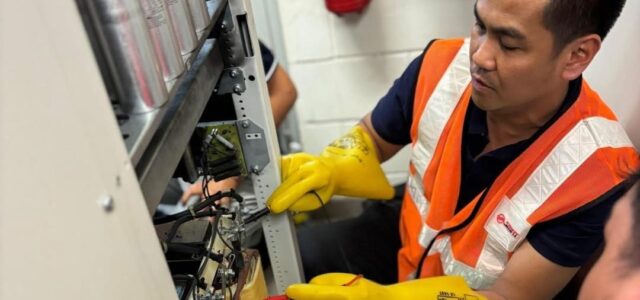After 3 disruptions in a week, SMRT Trains president Lam Sheau Kai assures commuters these were ‘isolated incidents’
after-3-disruptions-in-a-week-smrt-trains-president-lam-sheau-kai-assures-commuters-these-were-isolated-incidents
#disruptions #week #SMRT #Trains #president #Lam #Sheau #Kai #assures #commuters #isolated #incidents,
SINGAPORE: Over the past few days, Singapore’s rail network has had a rough ride. With three separate disruptions that rattled commuters between Sept 14 and 17, frustration and questions about reliability have been frequent. On Wednesday (Sept 17), however, SMRT Trains president Mr Lam Sheau Kai stepped forward with a clear message: these incidents were isolated, not signs of a deeper systemic problem.
Breaking down the incidents
In his statement, Mr Lam recapped the sequence of events. On Sept 14, a faulty train on the North–South Line had to be coupled with a rescue train and pushed back to the depot. The 12-car push-out took time, and passengers were safely disembarked before normal services resumed.
Then, on the evening of Sept 16, East–West Line commuters experienced delays when a faulty power component triggered a signalling failure between Aljunied and Tanah Merah stations. According to preliminary checks, the issue was contained to that single component and not part of a larger fault.
Finally, on the morning of Sept 17, the Thomson–East Coast Line came to a halt for around 30 minutes after a signalling fault required a system restart. To minimise the impact during the peak rush, commuters were guided to alternative lines.
“These are isolated cases, not systemic issues across the rail network,” Mr Lam emphasised, adding that in every situation, staff prioritised safety, activated bus bridging services, and kept recovery measures moving.
Next steps to strengthen reliability
Looking forward, SMRT outlined three main areas of focus in partnership with the Land Transport Authority (LTA), which include 1) a detailed assessment of rail assets with accelerated upgrades where needed, 2) technical audits of critical systems such as power and signalling, and 3) an ongoing commitment to safety-first procedures even if they require extra recovery time.
Mr Lam acknowledged the inconvenience these measures sometimes cause but stressed their necessity. “Safety precautionary measures, which typically take two to three hours, are necessary to ensure the protection of all,” he said.
To better support commuters, SMRT has also begun piloting enhanced crowd management from this month, equipping staff at major interchanges with improved tools to guide passengers more effectively during disruptions. At the same time, SMRT recognised a gap in how incident information reaches commuters and pledged to improve ground communications.
What Singaporeans are saying
Netizen responses to the announcement reflected a mix of frustration, support, and perspective. Some rallied behind the staff. “Let’s stand by our comrades and give them our fullest support,” wrote one, while another added, “Good effort done by our staff.” For these commuters, the focus was on the human effort behind recovery.
Others struck a hopeful note. “Hope all will be back soon,” one comment read, reflecting the wish for smoother rides ahead. A few also cautioned against harsh criticism. “It’s easy to criticise when things go wrong,” said one commuter, pointing out how demanding a rail system can be to manage.
And then there were comparisons from abroad. “This feels blown out of proportion. In London, taking the tube meant frequent delays and breakdowns. Here, the system feels more reliable,” noted one commenter, suggesting that while disruptions are frustrating, Singapore’s network is still held to a higher standard than many global counterparts.
A commitment to the long run
For now, SMRT’s message is straightforward: the recent disruptions were not connected and do not point to wider systemic cracks. The company says it is doubling down on asset renewal, technical audits, and clearer communication, with commuter safety remaining at the heart of its operations.
Admittedly, frustration is natural. Clearly, the online reactions show that. However, this shows how Singaporeans, though critical, remain deeply invested in their trains because, after all, in a city where rail is a lifeline, every bump on the track is felt by everyone.
Read also: All new motorcycles in Singapore to require Anti-lock Braking System from April 2027
